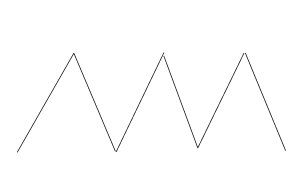You are missing trading opportunities:
- Free trading apps
- Over 8,000 signals for copying
- Economic news for exploring financial markets
Registration
Log in
You agree to website policy and terms of use
If you do not have an account, please register
Good.
and that as the size of the TF increases, the patterns emerge more clearly.As the size of the TF increases, everything remains the same... as it was before the increase.
OK.
Let's check the validity of Uladzimir's statement that as the size of the sliding window increases certain patterns emerge, and that these windows must be equal to certain time periods of the market.
1. Suppose Gunn is right, and the time cycles of the market represent a certain series; 1 day, 3 days, a week, ...
2. It used to be that 3 days equaled half of a weekly candle, while a week had 6 trading days. Now it is 5. Therefore, choose a sliding window = 2.5 days.
3. Working with OPEN M1 prices.
4. volume of sampling of the moving window = 3600 values OPEN M1.
5. Draw a simple moving average SMA(3600)
6. We calculate the process variance using the formula S=2*sqrt(2*D*t), where D=b^2, b- the average value of increments in the moving window, t- time = 3600
7. The channel boundaries are respectively: upper =SMA+S, lower =SMA-S.
8. BUY when the price crosses the lower boundary, SELL - when the price crosses the upper boundary.
9. Exit from the trade - when price intersects the moving average.
Usual strategy of trading in the channel relative to SMA, based on hypothesis of price returning to the average.
Only period = 2.5 days (3600 values OPEN M1) is unusual.
Then let's check on weekly moving window etc and answer the question - is Gann and Uladzimir right saying that there are time cycles in the market and the patterns become clearer with TF size increase.
Is anyone willing to test this?
We checked it 100 times. There's nothing there.

If the market were a flat, an ordinary flat strategy would work on it (the one you have). If the market were a trend market, an inverted flat strategy would have worked in it.
Then the market is neither trending nor flat.
If that were true, then the equity graph would look like this: prolonged up trends and prolonged down trends.
OK.
Let's check the validity of Uladzimir's statement that as the size of the sliding window increases certain patterns emerge, and that these windows must be equal to certain time periods of the market.
1. Suppose Gunn is right, and the time cycles of the market represent a certain series; 1 day, 3 days, a week, ...
2. It used to be that 3 days equaled half of a weekly candle, while a week had 6 trading days. Now it is 5. Therefore, choose a sliding window = 2.5 days.
3. Working with OPEN M1 prices.
4. volume of sampling of the moving window = 3600 values OPEN M1.
5. Draw a simple moving average SMA(3600)
6. We calculate the process variance using the formulaS=2*sqrt(2*D*t), where D=b^2, b- the average value of increments in the moving window, t- time = 3600
7. The channel boundaries are respectively: upper =SMA+S, lower =SMA-S.
8. BUY when the price crosses the lower boundary, SELL - when the price crosses the upper boundary.
9. Exit from the trade - when price intersects the moving average.
Usual strategy of trading in the channel relative to SMA, based on hypothesis of price returning to the average.
Only period = 2.5 days (3600 values OPEN M1) is unusual.
Then let's check on the weekly moving window etc and answer the question - is Gann and Uladzimir right saying that there are time cycles in the market and the patterns become clearer as the TF size increases.
Does anybody want to test it?
Good.
Would anyone be willing to test it?Test whoever you want.
Test whoever wants.
Hmmm...
D exactly = b^2, where b = (SUM(Abs(OPEN(i)-OPEN(i-1)),3600)/3600) ?
Can you show me a graph of the channel?
Hmmm...
D exactly = b^2
Wrong, I didn't square it )) Fixed it...
Can you show me a graph of the channel?
I didn't make a graph.
Three trades in the same period, two in the black.
Is the plus one at all posh? Over what period? And if you're on many pairs at the same time?
I've been hustling and trembling in my knees... The grail is needed like air!
Is the plus one at all posh? Over what period? And if we have many pairs at the same time?
In general, eurusd, gbpusd, audusd = beautiful, but nzdusd, usdjpy are in the red. There is no grail there.
All nice and correct almost! Why almost? I'll explain.
)))